Get Off Your Lawn
Quit cutting grass and start cutting down your water usage with inspiration from our Nature Gardens
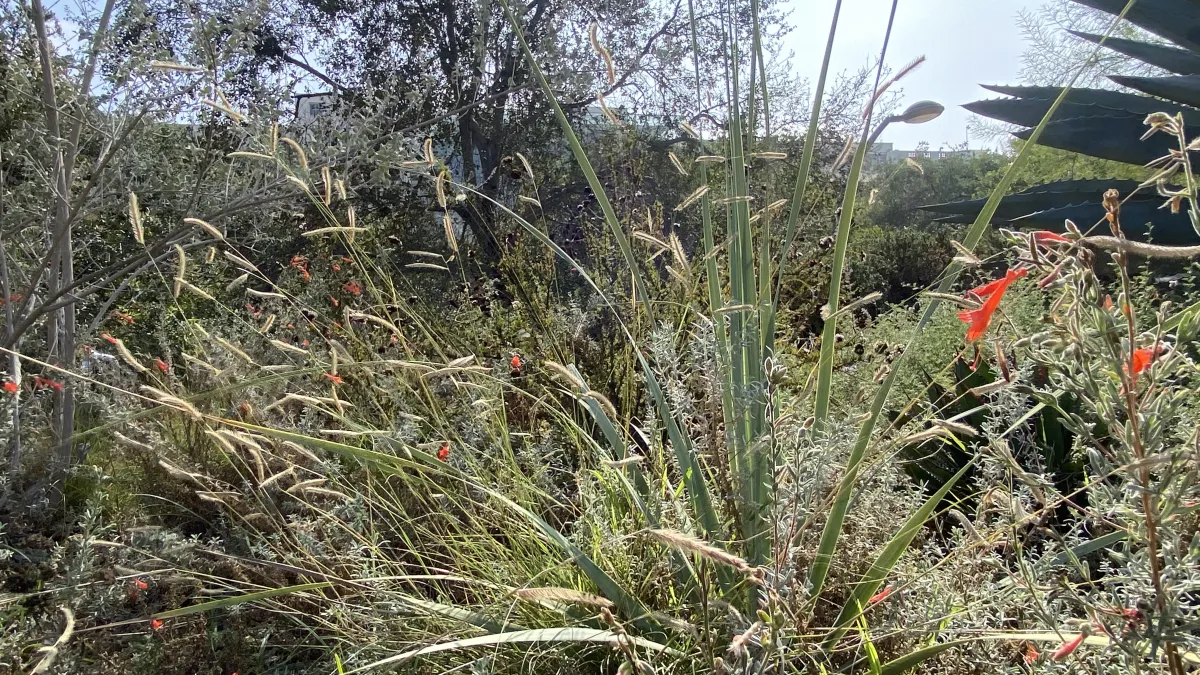
LADWP recently upped its rebate to $5 per square foot of grass removed. Learn more about indoor and outdoor water saving rebates: LADWP Lawn Replacement And Water-Efficient Appliance Rebates
July 07, 2022
Los Angeles is suffering the 22nd year of a regional megadrought, and Southern California is the driest it’s been in the last 1,200 years. In response, the City of L.A. and the Los Angeles Department of Water and Power enacted a new water conservation ordinance aimed at pulling the plug on wasteful watering. Public enemy number one? Lawns. Compared to other gardens, lawns require more work, chemical fertilizer, herbicide, equipment, chemical pest control—and precious water.
“A reduction or elimination of lawn is the best thing you can do for conserving water in the landscape,” says Daniel Feldman, NHMLAC’s Senior Manager of Horticulture.
Landscape irrigation is estimated to make up roughly 50 percent of residential water use across California, and lawns soak up about half of that, according to the University of California’s Center for Landscape and Urban Horticulture. While that translates to just 3.5–5% of all the water used across the state, As the climate changes, we’ll need to use every drop wisely, and while lawns are great for things like sports, barbecues, and dog doos, there’s so much more we could be doing with much less water.
Growing for Good
Almost none of the turfgrasses used in lawns are North American natives, and even fewer are native to California. Why does that matter? Plants native to the region have evolved to survive in more heat with less water–our typical Southern Californian summers–making them ideal for water conservation in times of drought. Native plants also help attract native pollinators and can support other animals generally threatened by our increased urbanization.
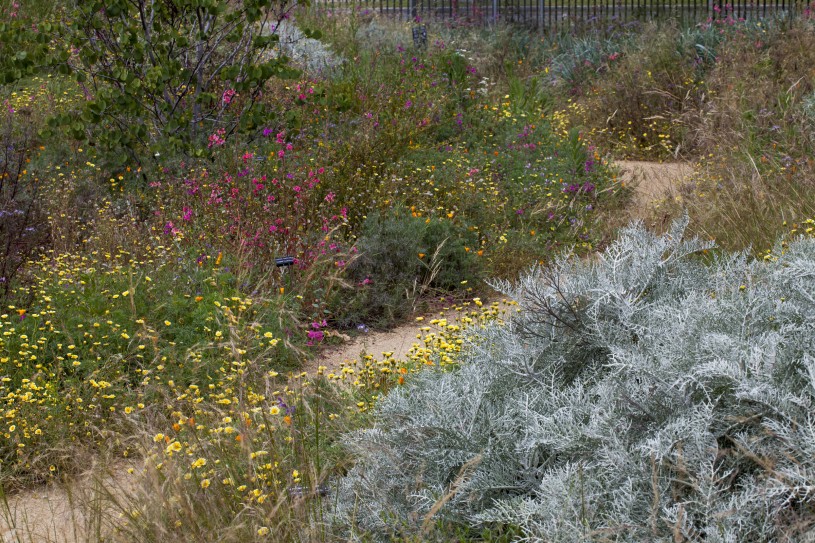
When you replace turfgrass with a mixture of native plants, you can end up with something like the meadow from NHM’s Nature Gardens. A meadow habitat teeming with colorful wildflowers and robust native grasses isn’t just stunning; it’s a magnet attracting butterflies and birds for your viewing pleasure along with beneficial insects we need to help shape a more resilient environment across the region as our climate continues to change.

Image by iNaturalist user jaesparza11
“NHM's Nature Gardens were designed to be an example of what a garden can be with less water, with a majority of California native plants and climate-appropriate plants from other regions,” says Feldman. “Plants of this type are "summer dry" and actually thrive with less water in the summer.”
You Can't Eat Lawns
Shockingly, lawns are the number one irrigated crop in the U.S. Why not make that patch of grass into the ingredients of your next great meal? Start small and simple–radishes are a great beginner crop that can be ready to harvest in just three weeks–or really dig in, and plan out a crop rotation or plants that help each other grow like the Three Sisters–corn, beans, and squash. Look into drip irrigation to keep conserving water. You’ll have plenty of time to plan and research as summer in Southern California is too hot to be an ideal to start planting most crops. Radishes, for example, will likely bolt in the heat. They won’t get up and run to cooler places, but go from leaves to flowers and seeds instead of leaves to edible food.
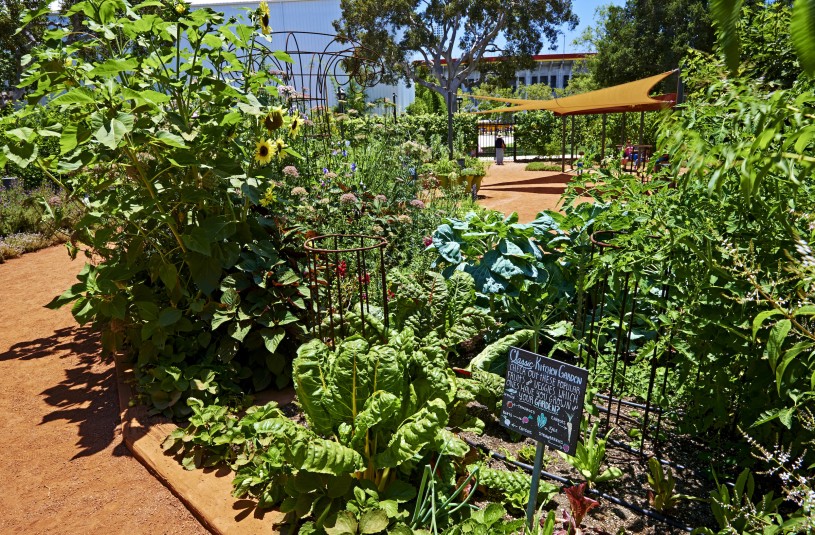
Why not try some native food plants like the beach and Montana de Oro woodland strawberries (Fragaria chiloensis and Fragaria vesca californica)? Or the hummingbird sage Salvia spathacea? Whatever you pick, the produce you produce can supplement your groceries, help teach some of the little stomachs in your life about where and how food is produced, and with the right amount of time and planning, grow into a beautiful expression of our connection with the natural world.
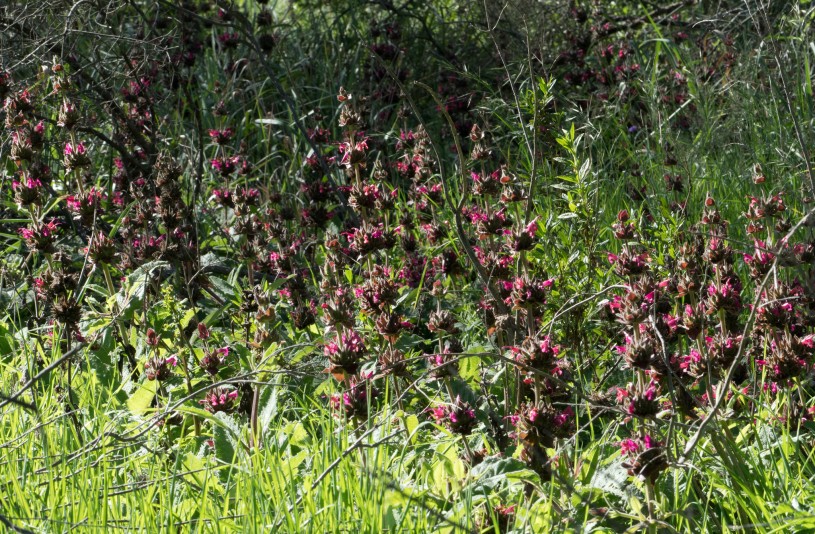
Fun With Fractal Flora
If you want to save water and indulge your inner designer, a succulent garden might be what you’re looking for. Some amazing species are featured in the Nature Gardens’ Living Wall.
These tough plants are usually well-adapted to hotter, drier climates, and many of the most striking species only grow where the mercury doesn’t drop to freezing. Succulents range from the gigantic to the petite, so whether you’re carpeting with Kalanchoes like rainbow scallops (Kalancho beharensis) or actualizing agave greats like the octopus agave (Agave vilmoriniana) there’s a succulent with your lawn’s name on it.
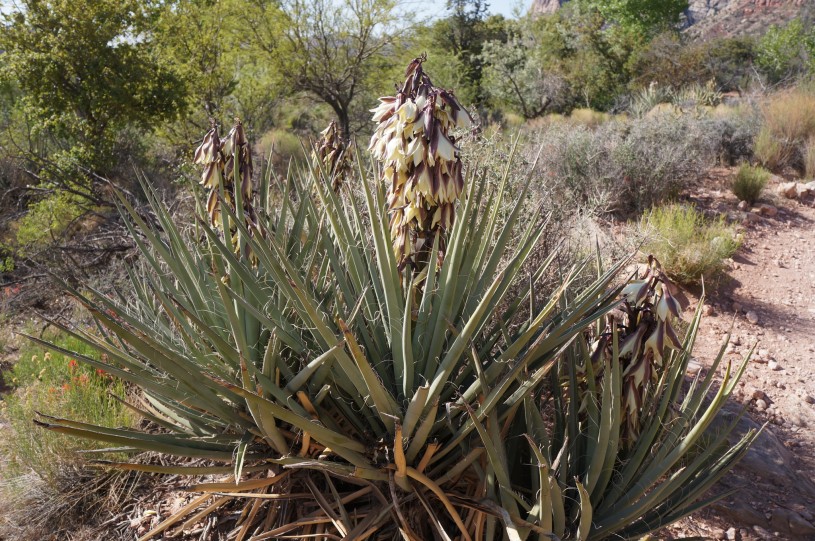
With leaves running from geometric to starkly alien, many succulents have a distinctively modernist flair that works well with hardscape. Smaller plants used as ground cover–pattern plantings–let you create eye-catching visuals that evolve into their own designs as they grow.
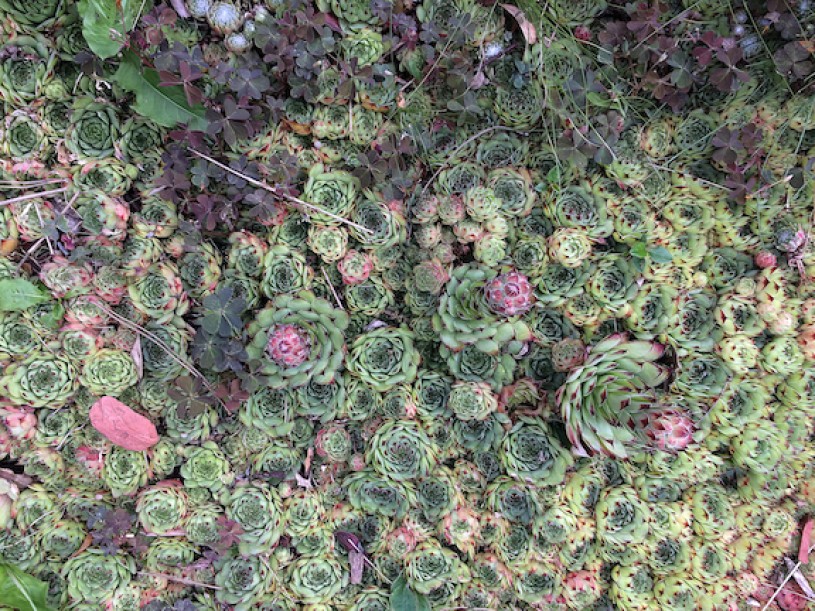
The great thing about succulents is that less can be so much more: fewer of each kind but more of each type will help you create a dazzling pattern or a few larger individual plants can be living sculptures in your front yard.
Seeds of the Future
Whether you find yourself indulging in succulents, harvesting plants for your pantry, or welcoming native critters into your front yard, it should conserve more water than a typical lawn. Many of the individual plants highlighted here cut across uses: native plants that attract pollinators, produce food, and sip rather than guzzle water. As you plan, be sure to check out local gardens like the California Botanic Garden in Claremont, South Coast Botanic Garden, and UCLA’s Mildred E. Mathias Botanical Garden for inspiration (and rejuvenation). Gardens like these along with nurseries specializing in native plants like the Theodor Payne Foundation are great places to start rethinking your lawn and expand your understanding of what grows best in your region. However you choose to replace your lawn, take the time to think it through. Remember that fall will be the best time to plant and help your new garden thrive, but you can change your watering habits right now.
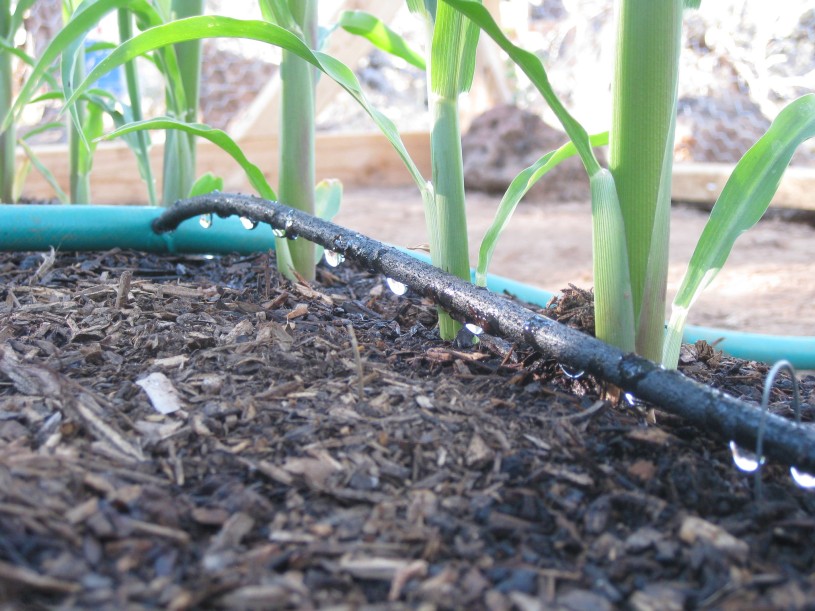
Image by Ryo Chijiiwa used under CC BY 2.0
In general, water in the early morning to avoid losing water to evaporation, and avoid watering during high winds. If you really want to cut down water use, transition your sprinkler system to a drip irrigation setup. Drip irrigation uses tubing that slowly drips water into the soil. Placed alongside plants, these systems get water more efficiently to the roots, improving the quality and productivity of your plants. “It is the single most efficient form of irrigation,” says Feldman. Less water, more plants!
Drip irrigation also has more flexibility under LADWP’s regulations. Native plants and succulents prefer the less frequent–but deeper and longer-lasting watering that drip irrigation produces.
These changes take time, investment, and planning, but your hard work now can plant the seeds for a more sustainable Southern California tomorrow. “If you create a more resilient and efficient garden now, future water restrictions will be easier to manage,” says Feldman.
A big thanks to our sponsor

